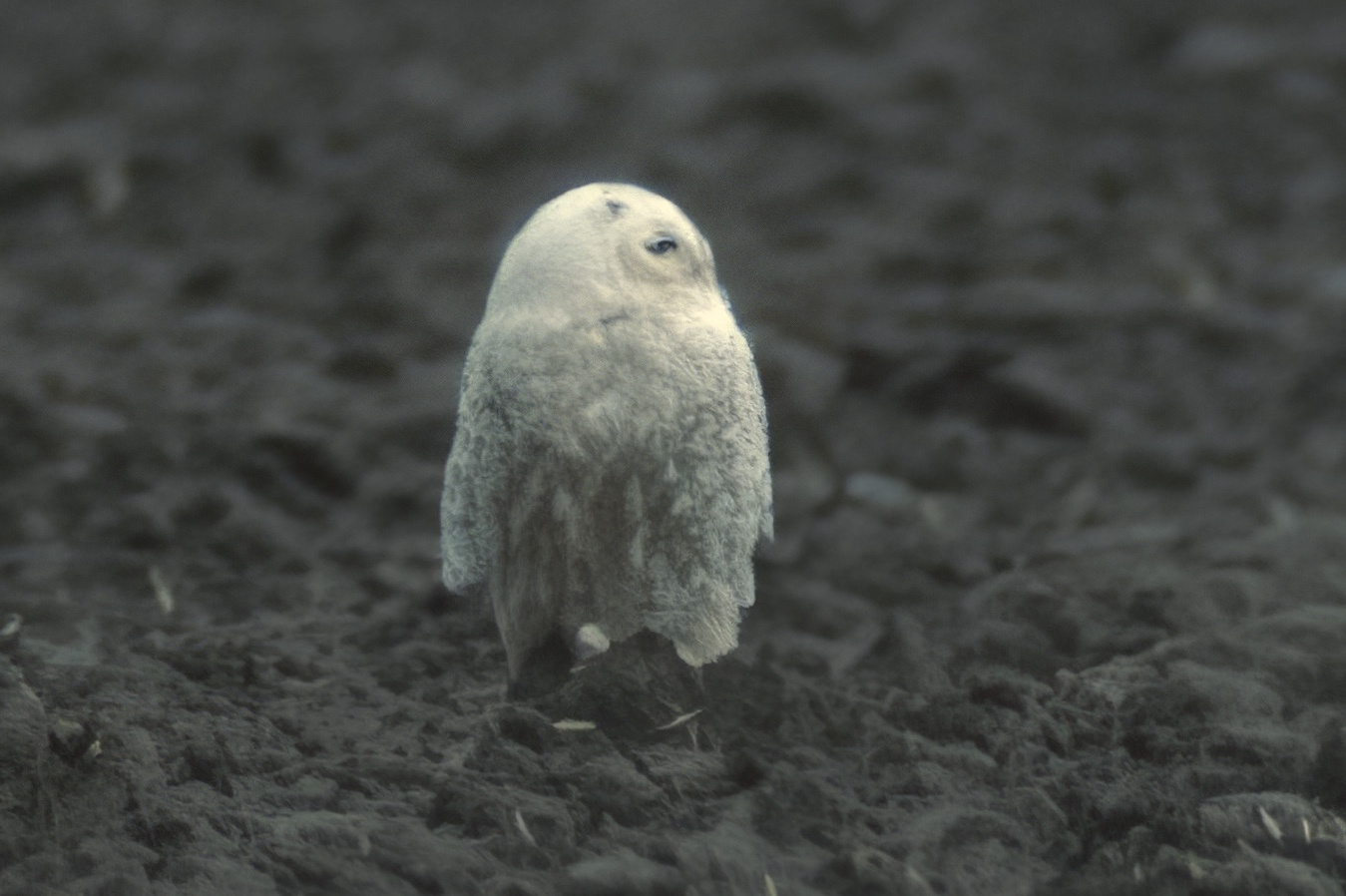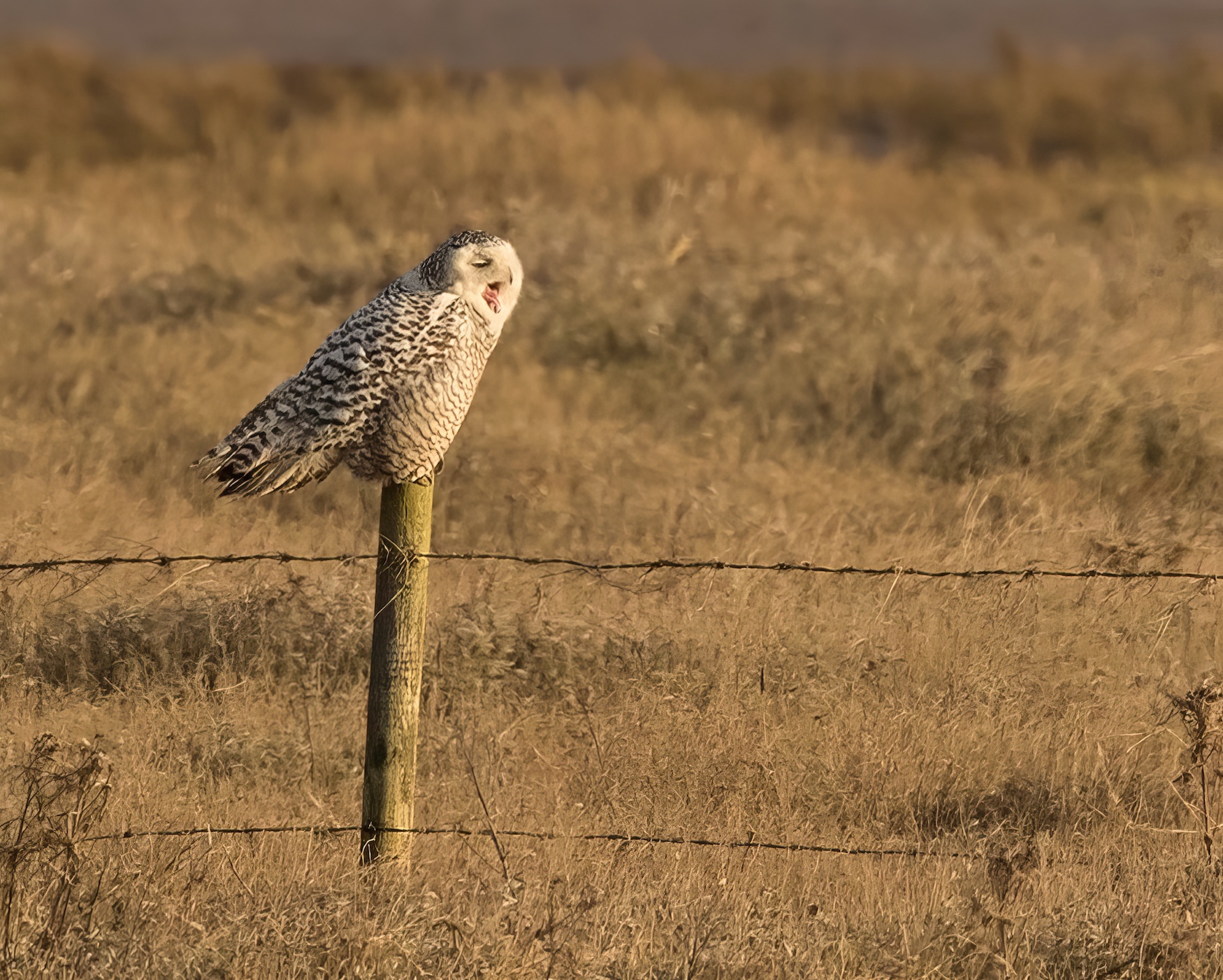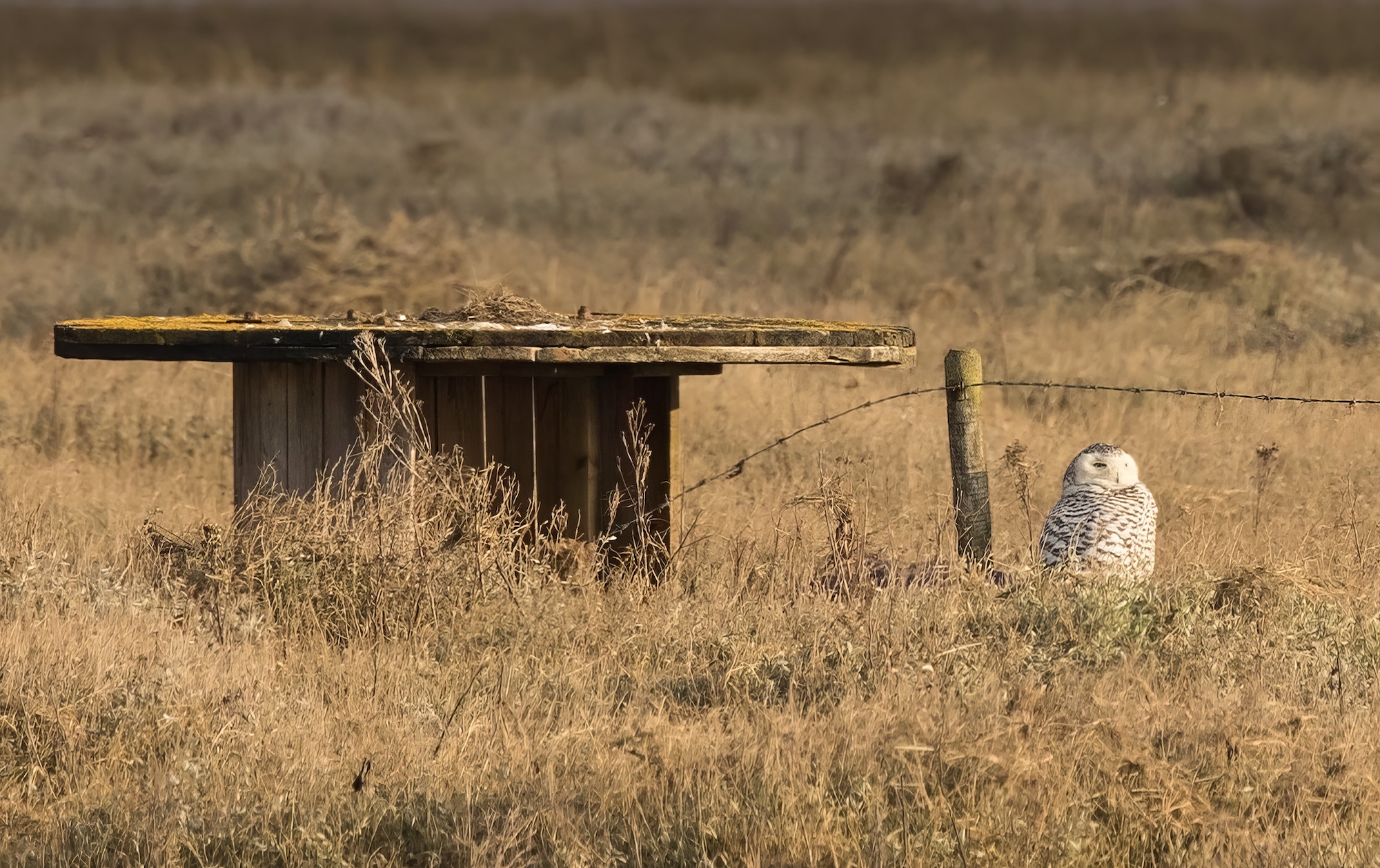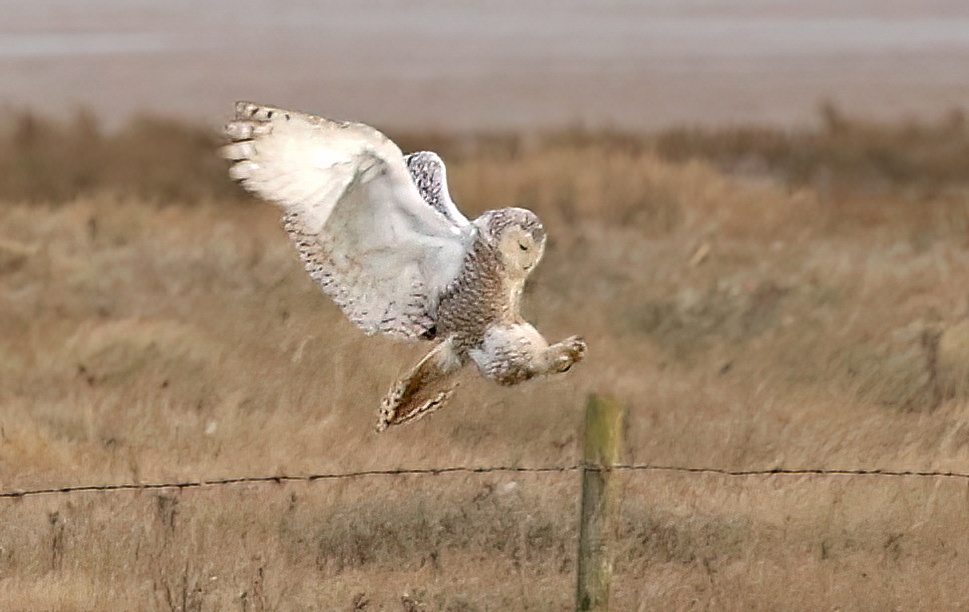Snowy Owl Nyctea scandica
Vagrant. Arctic region.




A 1CY male seen on farmland at Thornton Curtis on December 13th, 1990 was the first confirmed county record, staying for two hours before the attention of the local Great Black-backed Gulls, Larus marinus, became too much and it flew off. It was not relocated in the vicinity despite several days of searching but a few days after on December 17th, it was reported being mobbed by gulls on allotments on the outskirts of Cleethorpes before flying off to the south-west. It was then reported by a farmer on his fields at Wainfleet on December 24th. It stayed for nearly three months, dining on hares and was last seen on March 18th, 1991. It was subsequently seen in north Norfolk March 23rd-25th 1991 and then briefly at Spurn on March 30th before flying off north. Occurrences of Snowy Owls south of Shetland and mainland Scotland are infrequent and the last English record at that time was in November 1981, an adult female in county Durham.
Perhaps an unlikely species to turn up in the county, but lightning struck twice when a 2CY female was found in March 2018, and again at Wainfleet, after being seen in north Norfolk earlier in the month. The bird was present March 21st-22nd and then promptly disappeared, presumably into the wide-open spaces of The Wash saltmarshes, as what was presumed to be the same bird was seen at Frampton Marsh and Freiston Shore May 1st-10th 2018. The year 2018 was an unusually good one for Snowy Owls with 11 records. During 1950-2018, the British total stood at 235 records. Snowy Owls bred on Fetlar, 1967-1975, events not yet repeated. The origins of British Snowy Owls remain unknown as they are rare in Europe with few breeding in Scandinavia. The westerly bias to records suggests a Nearctic origin and there are several instances of these birds making use of ships.
*If anyone knows who took the 3 photographs of the 2018 bird, above, please contact LBC.
| Site | First date | Last date | Count | Note |
| Thornton Curtis | 13/12/1990 | - | 1 | Immature male |
| Wainfleet | 24/12/1990 | 18/03/1990 | 1 | Same immature male |
| Wainfleet | 21/03/2018 | 22/03/2018 | 1 | 2CY female |
| Freiston Shore | 01/05/2018 | 10/05/2018 | 1 | Same 2CY female. |
Finder’s report: Snowy Owl at Thornton Curtis, December 13th, and Wainfleet, December 24th, 1991 : first county record.
by G. P. Catley
Note: this account is based on the original BBRC submission which described the first sighting of the owl at Thornton Curtis before it turned up at Wainfleet almost two weeks later, together with the account of its finding in the Lincolnshire Bird Report for 1991. The RC report for 1990 pointed out that this individual was the first to be recorded in England since 1981, attracting much attention from birders and the media. It lingered into 1991 when the opinion of the RC was that it had moved around and was the bird also seen in Humberside and North Norfolk.
Circumstances
Thornton Curtis, December 13th
On Friday evening, December 14th, 1990, I received a message from Derek Robinson (DAR) asking if I knew about “the Snowy Owl”. It turned out that one had been present for two hours at Low Farm just north of Thornton Curtis on the morning of December 13th. It was found by one of the farm workers who knew what it was, and seen by the farmer, Mr. J. Hargreaves and three others including DAR, who described the bird as a male but mentioned that it had barring on the lower breast when seen through the ‘scope, and a white head. I suggested that it did not sound like an adult. The owl was flushed by two Greater Black-backed Gulls late morning and flew off. Searching the area over the next three days in the immediate area and others in the Wolds drew a blank.
Wainfleet, December 24th, 1990
The trail was picked up on December 28th when Phil Davey at Gibraltar Point had seen ‘it’ near Wainfleet on farmland after a Mr. J. Atkinson and Mr. Worth had reported it. The bird was quickly located on December 29th sitting in a field of root crops between two of the outer sea banks. Although it was about a mile away it was clearly a Snowy Owl, and it promptly flew a fields length towards me. It seemed to be hunting constantly and following hares and other potential prey. It flew twice again further away landing on a ploughed field. I did not see it kill the hare, although it may have done, but it could have found it dead. It fed on the carcass for several minutes. Suddenly it looked around bobbing its head and took off flying rapidly to the side of the grassy inland bank, about 150m away where it flushed a small raptor from its prey, I think a Merlin, but it may have been a Kestrel. The owl promptly swallowed the prey and returned to the hare where it fed again. It was eventually flushed by four characters hare coursing and flew towards me landing in the middle of a large, ploughed field about 200m away. It flew once more to the west landing again in a ploughed field about 40-50m from a farm track. The local farmer then appeared and suggested that I could, if desired, drive down the track to get closer to the owl. This I did, getting within 40m and taking a few photos. The owl occasionally looked at me in the car but was more concerned with the group of 6-7 people who had gathered 300m away on the inland sea bank. It was constantly watching their movements. It did not move again while I was there on December 29th.
Description
General appearance – a large, basically all-white owl from a distance, looking 2.5-3 times the size of the hare on which it was feeding, and dwarfing the Black-headed Gulls flying nearby.
Head and upperparts – even at long range in good light it could be seen to have pale brown barring on the wing coverts and upper back, but the head looked mostly white. Primaries at rest looked to also be sullied with a brownish tinge, but in flight looked pure white. In flight the barred wings showed up prominently, but the tail looked just an off-white colour. Close to, full details could be seen. Head all white but with a row of fine brown flecking across the crown with two vestigial blackish ear tufts. A faint row of flecking also visible on the rear nape area which usually showed as a broad white block. All of the wing coverts and mantle/back showed fine pale brown crescents on feathers forming a broken barred pattern much less obvious than on even adult females I had seen before. One of the tertials visible from behind showed a brown central line with brown bars out to the outer webs on either side. The primaries still looked to be sullied off-white to pale buff when perched. The tail seen very well when the bird landed with its back to me - when spread on landing the tail was white with brown subterminal spots on the two central tail feathers only.
Underparts – white, sullied with a brownish tinge. The sides of the breast were finely marked with short pale brown crescents which faded out on the lower belly.
Bare parts – eyes were a deep yellow, and when closed looked like two black lines. The bill seen close to was grey with a black tip; there was an area of brown staining around the bill too. Legs were completely feathered right over the toes with white feathers.
Behaviour – it flew with large, rounded wings in an easy and purposeful manner and seemed remarkably agile when attacking the small raptor and when landing on prey. During this quiet morning it was very active and obviously intent on feeding. With the arrival of larger numbers of birders, it became less active sitting still for hours on end on ensuing days, from what I am told. It always seemed to have its eye on the watchers, and I wonder how much its behaviour has been affected by the presence of large numbers of people, albeit without direct disturbance, over the period of its stay.
Identification as a 1CY to 2CY male based on the mostly white head, with fine markings and the restricted markings over the rest of the plumage compared to females seen in Shetland and in published photos.
(Account as per new Birds of Lincolnshire (2021), included October 2022)

